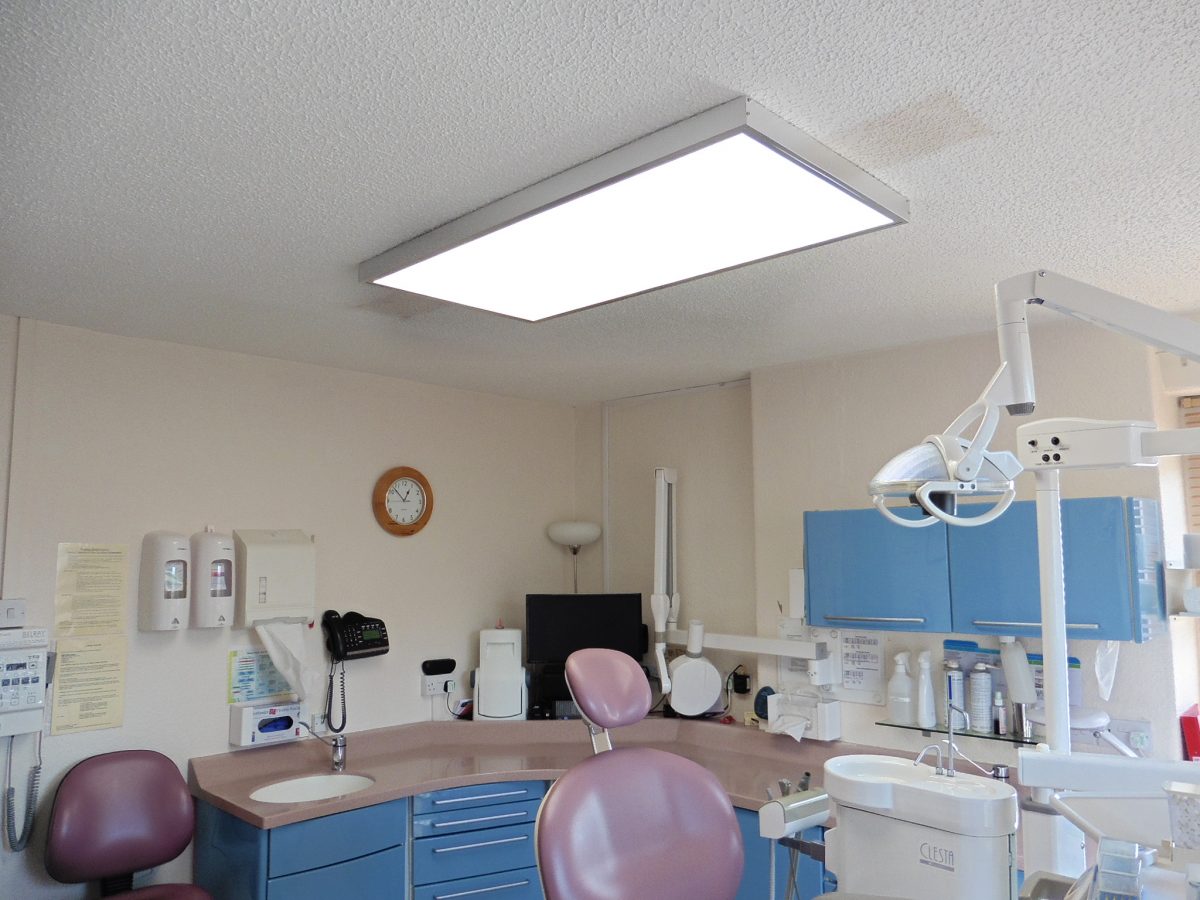Medical Practices – Why is Lighting Quality Important?
Speaking to Dental Surgeons and Practice Managers the consensus is that existing Lighting is often old Fluorescent, or more recently the replacement LED lights are failing or causing issues.
Common Issues with Fluorescents
- Yellow Light
- Poor LUX Levels (not enough Light)
- Faulty Aging Units
- Degraded Insulation (Possible Fire Hazard)
- Infrared & Ultra Violet (Skin and Eye degeneration)
Common Issues with LED Lights
- Glare (Poorly Defused Light)
- Flicker (Strobing Effect caused by Poor Electrical Smoothing)
- Failing units after a short time
- High Heat
For Medical Practices, Hospitals and Dentists changing to LED can be just as troublesome as the fluorescents they replace. Why?
Simply because your electrician will chose fittings mainly on looks and price per watt.
The issues highlighted above are seldom considered, in medical situations it is crucial that the efficiency, longevity and quality of the light are considered rather than just price.
I was visiting my own Dentist Peter Sedgewick when I noticed his Surgery lights were not all working. Peter went on to explain that he had to stand by the window to match tooth enamels. It was all very inconvenient and time consuming. In the winter almost impossible to get the match right!
He’d realised that he needed similar LUX level as required by engineers 500 – 750 LUX.
Taking a LUX reading in the surgery I could hardly get 100 LUX! The colour temperature or Kelvin was also important. The Daylight colour temperature is around 5000K, so lights have got to be between 4000 – 5000K to allow accurate colour matching. Another issue especially with Dentistry the Patient is looking up at the ceiling; if the colour is wrong and there is glare because the diffuser is poor or the light is strobing (you’ll see this through a camera lens).
With certain medical conditions Strobing will cause fits, Glare will also cause eye discomfort or eye damage.
Recently when Re-Lighting a Medical Centre the Doctors were pleased to have lights which were Glare and Flicker free. I was most important for them to provide a bright relaxed environment for both Staff and Patients without the fear of a light that could induce fits or eye discomfort.
So How Do You get the right quality of lighting?
There are standards for LED Lighting which dictates the colour consistency, the quality of Lens, the build standard of the driver will ensure they are both Flicker and Glare free.
The government provide an ETL standard for the build quality of LED lighting. Generally TUV manufacting as well as professional organisations such as ILP and HSE.
Generally a manufacturer with IOS14001 and TUV build standards will provide suitable products with a build life in excess of 50,000 hours will ensure a 15-25 year life.
LED Panel lights as shown above are Ideal for Medical and Dental Practices as they have well defused lens spreading the light evenly with Triac or Tridonic drivers.
LEDlights4you will design your lighting to ensure these standards are met and make your workplace relaxed and bright. Contact us Today for a free Accessment.
